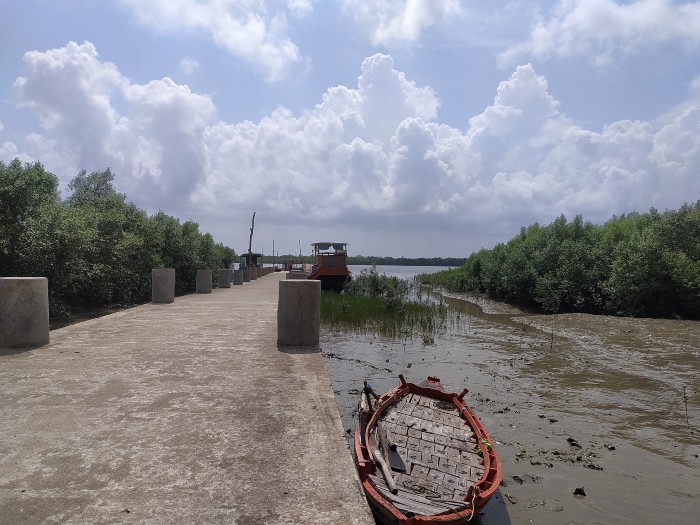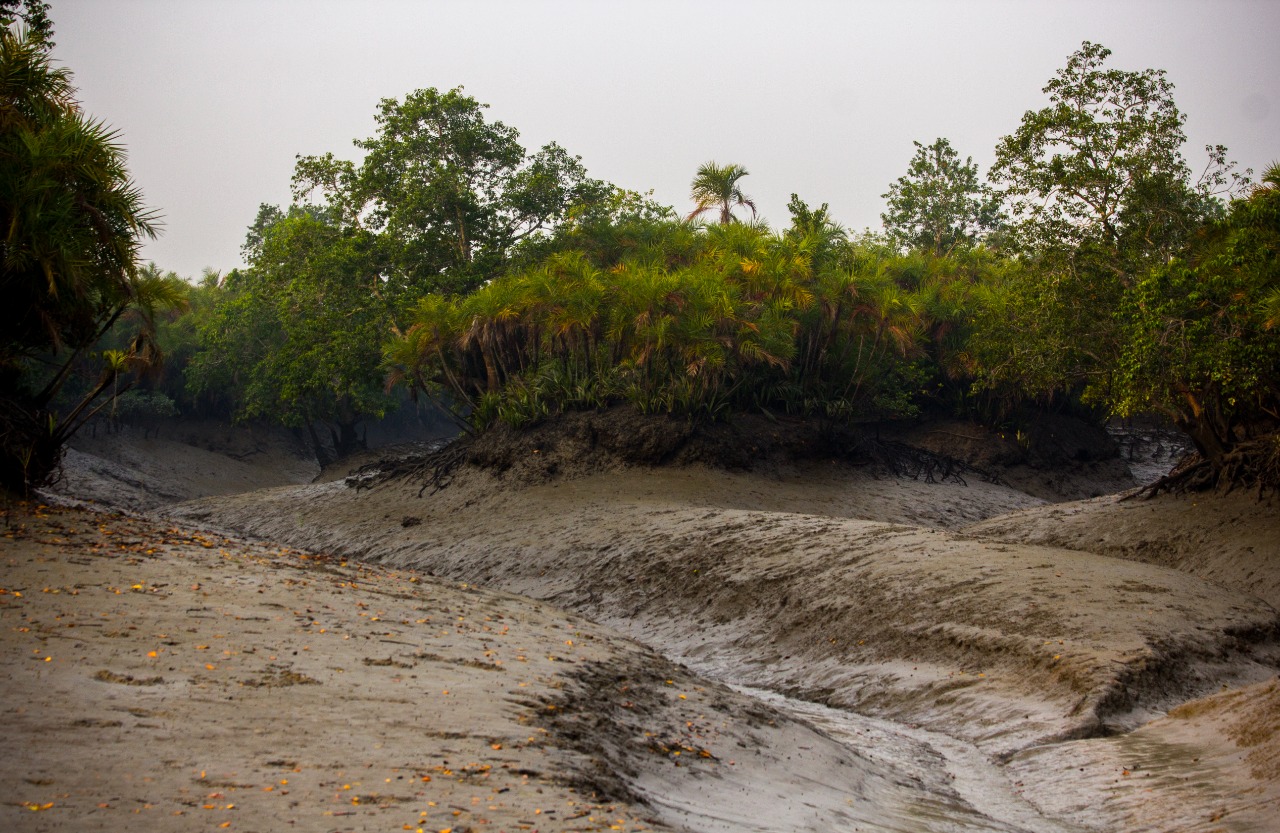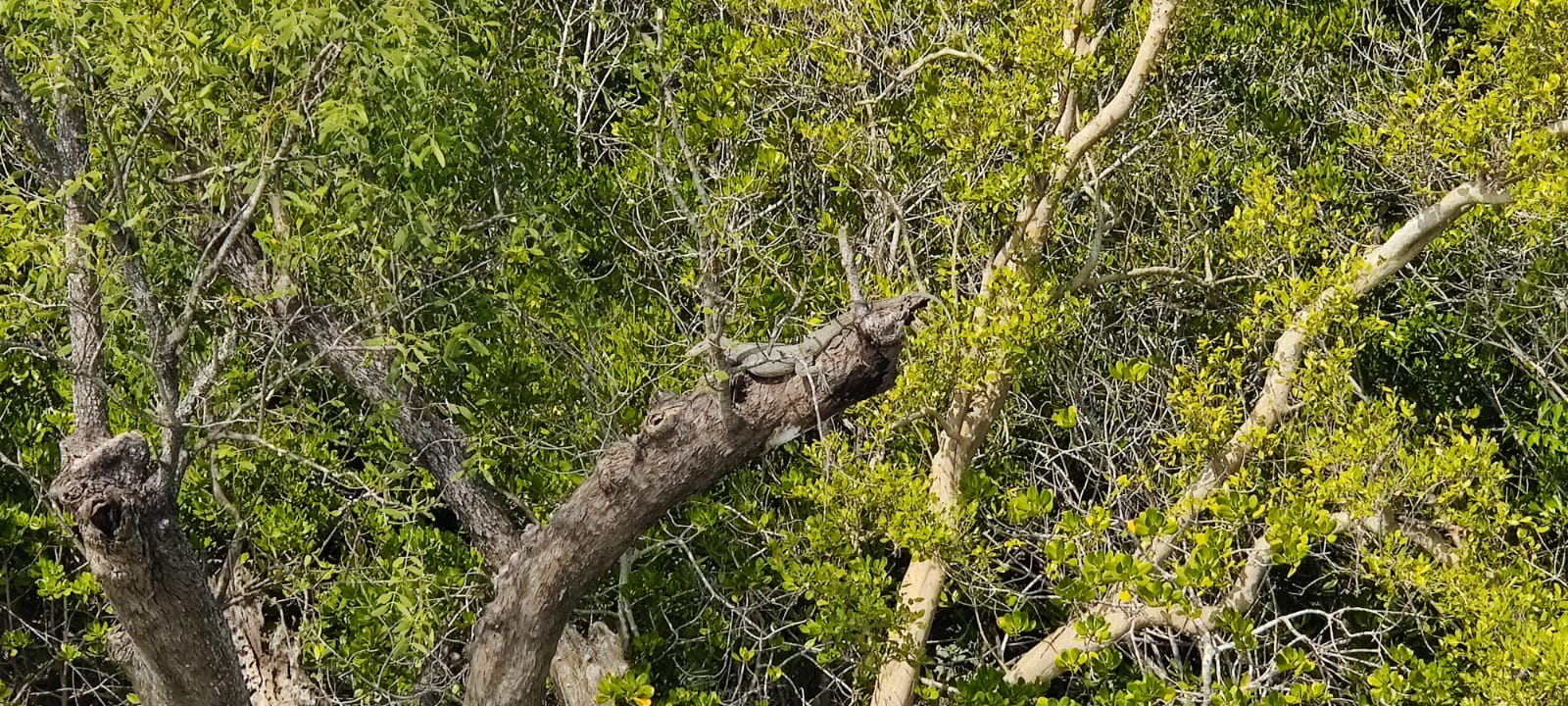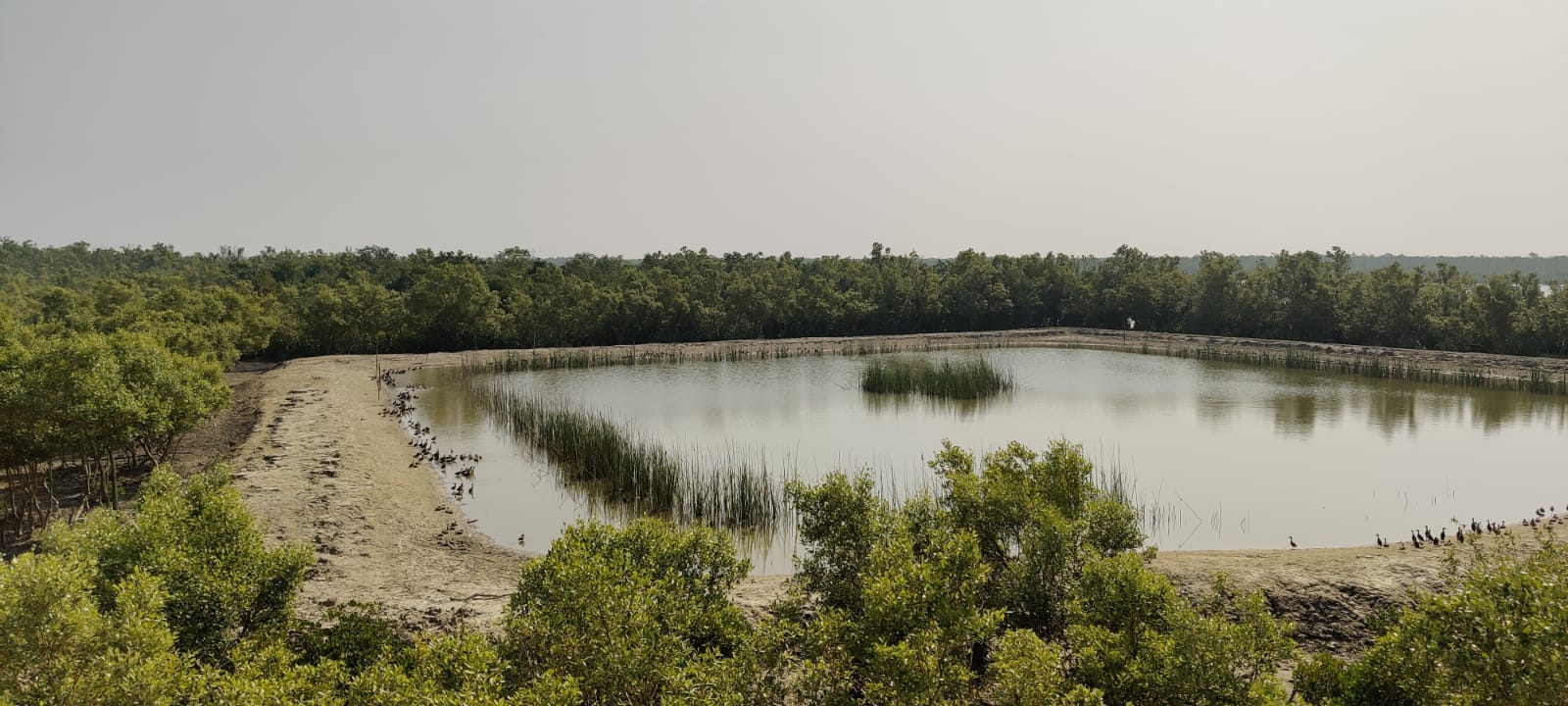Forests are known to hold tremendous potential in regulating greenhouse gas (GHG) emissions. While tropical rainforests play a huge role in offsetting carbon, scientific estimates suggest that mangrove forests are immense carbon sinks, given their ability to absorb carbon dioxide. Mangrove forests mostly consist of trees and shrubs growing in intertidal areas (where land meets the sea) and are a part of the tropical coastal ecosystem.

This forest tests its inhabitants due to the harsh weather conditions and its dense foliage. But what makes these mystical groves so special? How is it that these Mangrove forests can offer a solution to the global climate crisis in the same potential as the majestic tropical rainforests?
Carbon sequestration
According to a research article published by Frontiers in Marine Science, mangrove forests can store nearly 5 times the amount of carbon as compared to tropical forests. What has made mangroves a subject of fascination among scientific researchers, especially climatologists and marine biologists, is that they can store and sequester comparatively higher amounts of carbon in soils as well as biomass.
The ability to capture and store organic carbon in the soil results from a combination of high productivity of mangrove trees and their slow soil decomposition rates. The research further informs, “(…) complex mangrove root structures and waterlogged soils trap allochthonous organic material on top of deep, carbon-rich peat composed mainly of dead root material, sometimes extending up to 10 m depth.” As much as 90% of the carbon stored in the soil consists of organic mangrove carbon stocks (a large pool of dead roots which can serve as a nutrient conserving mechanism). That is why mangroves are regarded by the scientific community as a key solution to offset GHG emissions.

Historically, deforestation of mangrove forests has caused a huge amount of carbon emissions. The research article further informs that since the 1950s, an estimated 50% of the world’s mangroves have been deforested, largely due to change in the way land is used (for paddy cultivation and pisciculture). The research paper consulted above states that mangrove deforestation between 2000 and 2012 resulted in the emissions of more than 300 million Mg of CO2. Another astonishing fact reveals that the West Coral Triangle, which consists of a vast majority of the world’s stored organic carbon, lost 87% of its mangroves from 2000-2016. This was largely because forests were replaced by lands meant for agriculture and aquaculture. There is an urgent need for multilateral efforts by national and international organizations so that mangrove habitats can be utilised intelligently to regulate emissions.
Threats to mangroves in India
According to the Forest Survey of India, our country accounts for 45.8% of the total mangrove forest cover in South Asia. Indian Sundarbans is one of the world’s largest mangrove forests. Spanning 10,000 sq km across India and Bangladesh, 40% of the Sundarbans forest lies in West Bengal. However, a significant portion of the mangrove cover in all of India has been lost. According to the Madras School of Economics (MSE), mangrove habitats in states such as Andhra Pradesh and Andaman and Nicobar Islands have been consistently shrinking in size. In West Bengal, urban expansion, paddy cultivation and aquaculture have changed the Sundarban landscape.

Various anthropogenic factors threaten mangrove forests in India, of which agriculture and aquaculture take up the lion’s share. Vast swathes of forests are cleared for agriculture, where the land is made fertile using rainwater, reducing the salinity of the soil: A practice most prevalent in West Bengal and Tamil Nadu. Surrounding ecosystems also suffer damages due to spillover from excessive spraying of fertilisers.
Pollution is another factor severely affecting the health of the mangroves. Mangroves found around the coastal city of Mumbai face huge risks from unhealthy, untreated effluents and non-biodegradable waste. Visuals of plastic carry bags stuck on the branches of mangrove trees near the coastal areas are a common sight today. In West Bengal, 48 islands of the Sundarbans archipelago are inhabited by human beings. Absence of an efficient waste management system here leads to improper waste disposal, making it difficult for the mangroves to survive, thus hindering their growth.

The drastic impacts of climate change on mangrove forests also cannot be overlooked. Mangroves act as nature’s defence mechanism against cyclones and tsunamis by diminishing the intensity of their impacts. An already threatened mangrove habitat is failing to keep up with the increased frequency of cyclones and storms due to climate change. West Bengal has experienced some of the worst damages due to climate change, with rising sea-levels causing a few islands to submerge. The Bay of Bengal is one of the most volatile regions when it comes to destructive cyclones. Consequently, West Bengal and Odisha had to face the wrath of a category 5 supercyclone Amphan in 2020, the worst to hit Sundarbans in the last 300 years. According to media reports, Amphan damaged almost 28% of the Sundarbans region.
Measures for protection
Mangroves are facing various threats, but there are solutions which can help us protect these precious ecosystems. Ecological restoration, regeneration and consistent monitoring are required to avoid further loss of forest cover and allow mangrove forests to perform their natural function of sequestering carbon from the atmosphere. To prevent risks from natural phenomena such as tsunamis and cyclones, more efficient weather warning systems are required based on meteorological data. Governments can also resort to mangrove plantations on the coasts to act as barriers, as done by countries like Indonesia and Malaysia.
Marine and coastal pollution are some of the biggest menaces to mangroves, and an efficient waste management system can help tackle this problem. Additionally, stricter implementation of pollution regulations can also contribute to the success of conserving these habitats. Another way to reduce pressure on the forests is to generate livelihoods through eco-tourism. The eco-tourism model can act as a source of employment as well as conserve the forests, if its responsibility is given to the local communities. These collective measures can help preserve both mangrove habitats and their biodiversity.





